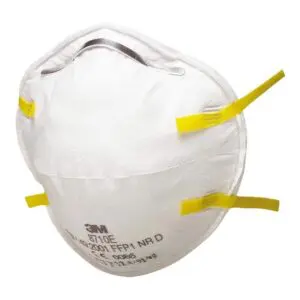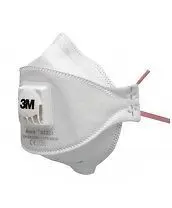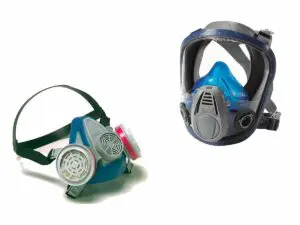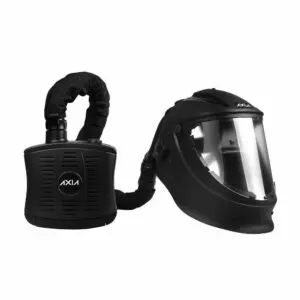In this article will give a brief insight into the different types of face masks available for use within a commercial environment, as well as explaining the differences we will give some examples of what our customers use these masks for, to help you understand what types of application they are being used for.
UNDERSTANDING FACE MASK NAMING
As you may have seen from our own website the terms FFP1 and FFP2 and so on, are quite common, but what do these names actually mean?
To put it simply:
- FFP stands for ‘Filtering Face Piece’
- The number that follows indicates the level of protection, the higher the number, the higher the level of protection.
- FFP masks have been certified as meeting the EN 149-2001 standard, which sets minimum performance criteria for efficiency, breathability, structural stability and biocompatibility.
You may also see the following terms used to indicate the type of mask: P1, P2 and P3; these are simply abbreviated versions of the full names i.e. P1 = FFP1
WHICH MASK SHOULD YOU CHOSE?
For the purposes of this article, we are just looking at respiratory protection, but you should consider exactly what you need for each material being worked on and what the Workplace Exposure Limit (WEL) is for any hazardous material you are working with, as your face mask should be designed to bring the concentration of hazardous materials in the air down to below the WEL levels. If you are unsure consult your organisations Health and Safety advisor.
The type of mask you chose will depend on what activity you are planning on doing and the anticipated levels of dust and fumes created during the process and, importantly, the type of material you will be working on. Some materials are of course more hazardous than others which why you should always ensure you wear the correct personal protection equipment (PPE).
In the section below we give a quick insight into each type of face mask currently available (2021):
 Standard Surgical Face Mask
Standard Surgical Face Mask
Following the COVID pandemic these surgical face masks have become commonly available but as they are designed to be lose fitting and do not create a tight seal around the nose and mouth they should never be considered as an effective barrier against dust and fumes.
 FFP1 Mask
FFP1 Mask
Commonly used for: DIY Hand Sanding, Drilling and Cutting
Create a seal around the nose and mouth.
The lowest level of FFP protection and only really suitable for low levels of dust and non toxic substances; does provide protection against solid and liquid aerosols.
 FFP2 Mask
FFP2 Mask
Commonly used for: Plastering and Sanding
Creates a seal around the nose and mouth
FFP2 masks protect against moderate levels of dust as well as solid and liquid aerosols. They are also often used in the healthcare industry to protect against viruses.
 FFP3 Mask
FFP3 Mask
Commonly used for: Handling hazardous powders such as those found in the pharmaceutical industry or when working with hazardous fibrous materials such as asbestos.
Creates a seal around the mouth and nose
Protection against higher levels of dust; providing more protection than FFP1 and FFP2. FFP3 are also commonly seen as the ‘go to’ mask when people are unsure of the level of protection required.
Respirator

Supplied either as a half mask, covering the nose mouth, and chin, or as a full face mask, these respirators are designed to be heavy-duty respiratory protection.
Commonly used for: Industrial levels of Sanding, Cutting and Painting
Protection against both dust and fumes. The half-mask variant will not provide protection to eyes, therefore if you are working with hazardous materials that are prone to causing eye irritation, we suggest selecting a full face mask, which will provide a perfect seal around the whole face.
Both variants are fitted with removable and replaceable cartridges, which purify the air as the wearer breathes. You will usually find that filters are interchangeable meaning you don’t have to stick with just one brand but also that you can adjust the density of your filter depending upon the job being undertaken.
 Air Fed Respirator
Air Fed Respirator
Commonly used for: Industrial levels of Sanding, Cutting and Painting
A full-face respirator, works on the same principle as the standard respirator (details above) but with the added benefit of introducing an airline, supplying fresh air and protecting the wearer against irritating vapors, mists, and splashed chemicals.
For more information on our wide range of PPE call us direct on 023 8025 1100 or check out the full product range here.

